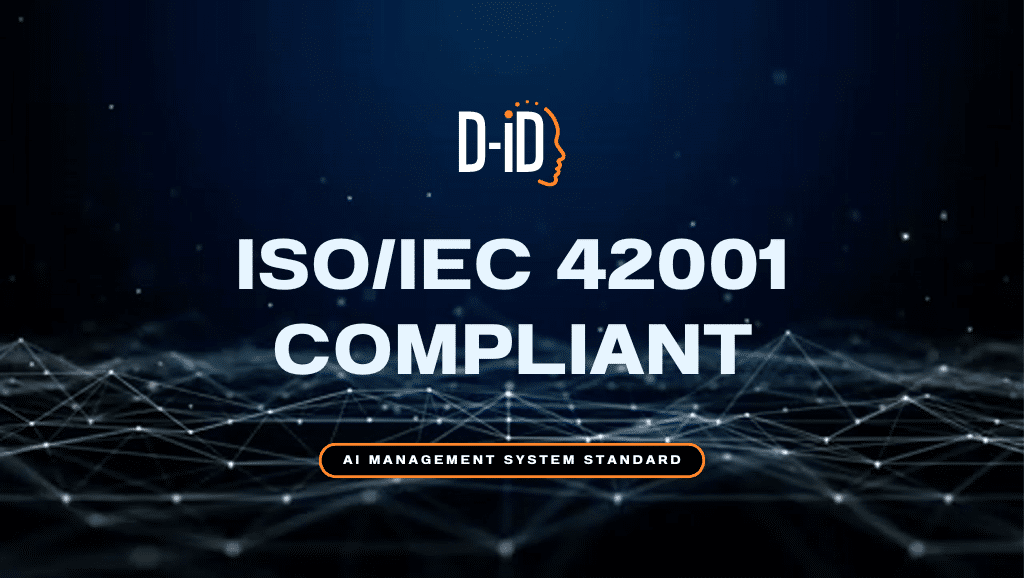Personalized Video Marketing: Metrics, Benefits and Advantages

Now, more than ever, businesses can effortlessly connect with customers from all corners of the planet. For example, a company based in Taiwan can engage with a shopper lounging on their couch in Italy via social media posts, blog posts, and, of course, a localized website with multicurrency checkout and international shipping options.
But these days, the ability to reach potential customers wherever they are is no longer enough. Companies aiming to attract and convert buyers must engage and delight them in meaningful ways. Personalized videos offer a powerful solution by bringing a whole new level of identification and engagement to the process. They transform passive viewers into active participants, and foster a sense of connection and loyalty.
In this blog post, we’ll overview the metrics, benefits, and advantages of personalized video marketing, highlighting how it can enhance customer engagement and improve conversion rates for businesses, just like yours.
What is Personalized Video Marketing?
Personalized video marketing is the process of creating personalized videos for customers tailored specifically to individual viewers based on their unique preferences, behaviors, and interactions with a brand. Creating these custom marketing videos often involves integrating personal elements such as the viewer’s name, previous purchases, or browsing history, which helps to create a more engaging and relevant experience.
The importance of personalized video marketing lies in its ability to capture attention and foster deeper connections with viewers. In an era where people are bombarded with generic content, people want brands to get to know them and understand when to approach them. Personalized videos stand out by addressing the viewer directly, making them feel seen and valued. As such, this targeted approach doubly benefits the business; it enhances engagement and increases the likelihood of conversions.
Key Metrics to Measure Success in Personalized Video Campaigns
Tracking metrics is how businesses gain visibility into, and gauge the success (or lack thereof), of their marketing campaigns. Metrics provide insights into how well a campaign is performing, identify areas for improvement, and justify marketing investments. In the context of personalized video marketing, understanding specific metrics can help fine-tune strategies to maximize engagement and conversion rates.
Here are some essential metrics your business should keep an eye on, across your video marketing production activities:
Video and CTA Click-Through Rate (CTR)
The CTR measures the effectiveness of your video’s call-to-action. It indicates the percentage of viewers who clicked on a link or button in your video, guiding them to take further action, such as visiting your website or making a purchase.
Geolocation
Knowing where your viewers are located can help tailor content to specific regions and understand where your video is gaining the most traction.
Open Rate
For videos shared via email, the open rate tells you how many recipients opened the email containing the video. This is important because unopened emails mean videos left unwatched. Personalized subject lines can give your email open rate a massive boost.
Viewing Rate
This metric shows the percentage of email recipients who opened the email and then clicked through to watch the video. Higher viewing rates indicate effective subject lines and email content. Personalization helps increase the viewing rate further, often to above 67%.
Video Completion Rate
The completion rate measures how many viewers watched your video all the way to the end. Higher rates suggest that your video content is engaging and relevant to the specific viewer.
Video Plays
This metric indicates the number of times your video has been played. It’s a basic measure of reach and helps you understand how many people are initiating the video.
Percentage of Video Viewed
This shows how much of your video viewers are watching on average. Higher percentages indicate better engagement, suggesting that the content is compelling and retaining viewers’ attention.
Net Promoter Score (NPS)
NPS measures customer satisfaction and loyalty by determining if viewers would recommend your brand to others. High NPS indicates positive viewer experiences with your content and services.
Customer Satisfaction Index (CSI)
CSI gauges viewers’ overall satisfaction with your videos. Including surveys at the end of videos can provide direct feedback for improvement, so you can adapt your personalized video content to further optimize metrics.
Conversion Rate
This metric tracks the number of leads or sales generated from your video. As such, it helps you understand the ROI of your video marketing efforts, so you can reallocate funds to create an even bigger, more positive impact.
Social Sharing
Social sharing metrics show how often your video is shared across social media platforms. Although personalized marketing videos are highly customized, they may still resonate with many people sharing similar customer personas, and high shares increase reach and brand awareness even further.
Average Response Time
This metric measures how long, on average, it takes for the user to respond to the video by taking action, such as clicking through to your website, filling a shopping cart, or checking out. Faster response times can mean greater interest in your content.
Playback Issues
Tracking issues like buffering, stuttering, or failures to play helps identify and resolve problems that might be affecting the viewer experience. Remember, longer lag can reduce viewers, increasing their likelihood of bouncing.
Most Active Hours of Video Views
Understanding when your audience is most active can help optimize the timing of your video releases to maximize viewership and engagement.
Retention Rate
High retention rates indicate that your video content is consistently engaging and valuable to your audience over time, encouraging them to rewatch existing content, watch new content, and repeatedly convert.
Benefits of Personalized Video Marketing for Businesses
When done right, personalized marketing videos help businesses stand out in an oversaturated market, enabling them to enjoy the following benefits:
- Increased customer engagement: Personalized videos are 35% to 116% more effective than generic videos and have 16 times higher click-to-open rates, making viewers feel directly addressed and valued.
- Better conversion rates: Businesses using personalized videos see more potential customers converting. What’s more, personalized calls to action result in markedly better conversions compared to generic CTAs.
- Higher email open rates: Adding personalized elements to emails can increase open rates, reducing inbox fatigue and making emails more intriguing.
- Enhanced brand loyalty: When asked, many customers mention personalization as a reason to stay loyal to a brand and cite poor personalization as a major reason they don’t place their trust in brands.
- Cost efficiency and flexibility: Using online video personalization software speeds up the rendering process, reducing production costs and allowing businesses to scale their video marketing efforts quickly.
- Superior customer experience: Personalized videos lead to a superior customer experience, with 73% of consumers preferring brands that personalize their interactions.
Best Practices for Implementing Personalized Video Marketing
Now that you understand what personalized marketing videos are, what they can do for your business, and how to measure your campaigns’ success, it’s time to roll up your sleeves and start creating stunning, engaging, and yes, highly personalized marketing videos.
Here are some personalized video marketing best practices:
- Identify your target audience: Ensure you’re targeting the right people with your videos. Perform market and competitor research to make sure you’re on track.
- Gather personal data: Collect data from various sources, including website analytics, CRM systems, and surveys, while continuously complying with relevant data privacy regulations like GDPR.
- Create custom segments: Use your collected data to create custom audience segments, so you can speak to their pains and how you seek to resolve them.
- Make it personal: Customize your videos based on everything you know about each segment. Get creative and experiment to see what works best for your audience.
- Use AI video solutions like D-ID: With D-ID, you can generate AI video avatars. They can be used in highly personalized marketing videos for various use cases such as customer service, sales outreach, and educational content. Read this case study to see how we used it in our own marketing.
- Measure your results: Track your metrics and adjust your marketing video content and strategies based on the insights they reveal.
So, what are your next steps?
- Head over to our homepage.
- Check out our Creative Reality Studio and AI avatar generator.
- Sign up for a free trial.
- If anything isn’t clear or you want to discuss your needs with a pro, contact us to set up a consultation.
Now, let’s get personal!
Was this post useful?
Thank you for your feedback!


